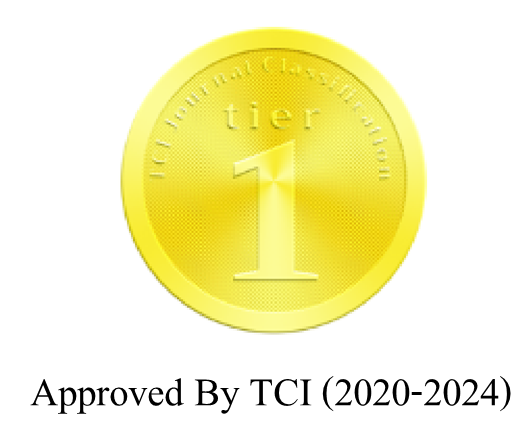Private Tutoring Schools and Tutors in the Principal-Agent Model
Abstract
This paper modified the principal-agent model originated by Holmstrom & Milgrom (1987, 1991) to explain interaction between private tutoring schools and tutors. This modified model gives the following propositions. The strength of the incentives and the level of tutoring preparation are positively affected by (1) the quality of private tutoring (2) the income gap between high - rank university graduates and low - rank university graduates (3) a reduction in the rate of households’ time preference.
References
1.Biswal, B.P. (1999) Private tutoring and public corruption: A cost-effective education system for
developing countries, The Developing Economies, 37(2), 222-240.
2.Dang, H-A & Rogers, F.H. (2008) How to interpret the growing phenomenon of private tutoring:
human capital deepening, inequality increasing, or waste of resources? Paper provided by the World Bank in its series Policy Research Working paper Series with number 4530.
3.Dessy, S.E., St-Amour, P. & Vencatachellum, D. (1998) The economics of private tutoring.
Paper provided by Université Laval, Département de économique in its series Cahiers de Recherche with number 9809.
4.Foss, J. N. & Laursen, K. (2002) Performance pay, delegation, and multitasking under
uncertainty and innovativeness: an empirical investigation. DRUID working paper no. 02-14.
5.Glewwe, P. & Jayachandran, S. (2006) Incentive to teach badly? After-school tutoring in
developing countries, Mimeo, University of Minnesota.
6.Haubrich, J. G. (1991) Risk aversion, performance pay, and the principal-agent problem.
Working paper no. 9118, the Federal Reserve Bank of Cleveland.
7.Holmstrom, B. & Milgrom P. (1987) Aggregation and Linearity in the Provision of
Intertemporal Incentives, Econometrica, 55(2), pp. 303–328.
8.Holmstrom, B. & Milgrom P. (1991) Multi-Task Principal-Agent Analyses: Linear Contracts,
Asset Ownership and Job Design, Journal of Law, Economics and Organization, 7, pp. 24-52.
9.Kim, J.H. (2007). A game theoretical approach to private tutoring, NCSPE Research
Publications, 144.
10.Kim, S. & Lee, J-H (2002). Private tutoring and demand for education in South Korea, KDI
School Working Paper.
11.Ng, T. & Li, M. (2012). How does private tutoring corrupt a teachers' performance pay system,
Hong Kong, The Chinese University of Hong Kong.
12.Scott, S. (1998). The dependence of pay-performance sensitivity on the size of the firm, The
Review of Economics and Statistics, 80 (3), pp. 436–443.
13.Srinivasan, R. J. & Lal, R. (1993) Compensation plans for single- and multi-product salesforces:
An application of the Holmstrom-Milgrom model, Management Science, 39 (7), pp. 777-793.
developing countries, The Developing Economies, 37(2), 222-240.
2.Dang, H-A & Rogers, F.H. (2008) How to interpret the growing phenomenon of private tutoring:
human capital deepening, inequality increasing, or waste of resources? Paper provided by the World Bank in its series Policy Research Working paper Series with number 4530.
3.Dessy, S.E., St-Amour, P. & Vencatachellum, D. (1998) The economics of private tutoring.
Paper provided by Université Laval, Département de économique in its series Cahiers de Recherche with number 9809.
4.Foss, J. N. & Laursen, K. (2002) Performance pay, delegation, and multitasking under
uncertainty and innovativeness: an empirical investigation. DRUID working paper no. 02-14.
5.Glewwe, P. & Jayachandran, S. (2006) Incentive to teach badly? After-school tutoring in
developing countries, Mimeo, University of Minnesota.
6.Haubrich, J. G. (1991) Risk aversion, performance pay, and the principal-agent problem.
Working paper no. 9118, the Federal Reserve Bank of Cleveland.
7.Holmstrom, B. & Milgrom P. (1987) Aggregation and Linearity in the Provision of
Intertemporal Incentives, Econometrica, 55(2), pp. 303–328.
8.Holmstrom, B. & Milgrom P. (1991) Multi-Task Principal-Agent Analyses: Linear Contracts,
Asset Ownership and Job Design, Journal of Law, Economics and Organization, 7, pp. 24-52.
9.Kim, J.H. (2007). A game theoretical approach to private tutoring, NCSPE Research
Publications, 144.
10.Kim, S. & Lee, J-H (2002). Private tutoring and demand for education in South Korea, KDI
School Working Paper.
11.Ng, T. & Li, M. (2012). How does private tutoring corrupt a teachers' performance pay system,
Hong Kong, The Chinese University of Hong Kong.
12.Scott, S. (1998). The dependence of pay-performance sensitivity on the size of the firm, The
Review of Economics and Statistics, 80 (3), pp. 436–443.
13.Srinivasan, R. J. & Lal, R. (1993) Compensation plans for single- and multi-product salesforces:
An application of the Holmstrom-Milgrom model, Management Science, 39 (7), pp. 777-793.
Published
2012-03-22
How to Cite
ปิ่นมณี ป. (2012). Private Tutoring Schools and Tutors in the Principal-Agent Model. Thailand and The World Economy, 30(2), 49–69. Retrieved from https://so05.tci-thaijo.org/index.php/TER/article/view/136693
Issue
Section
Articles







